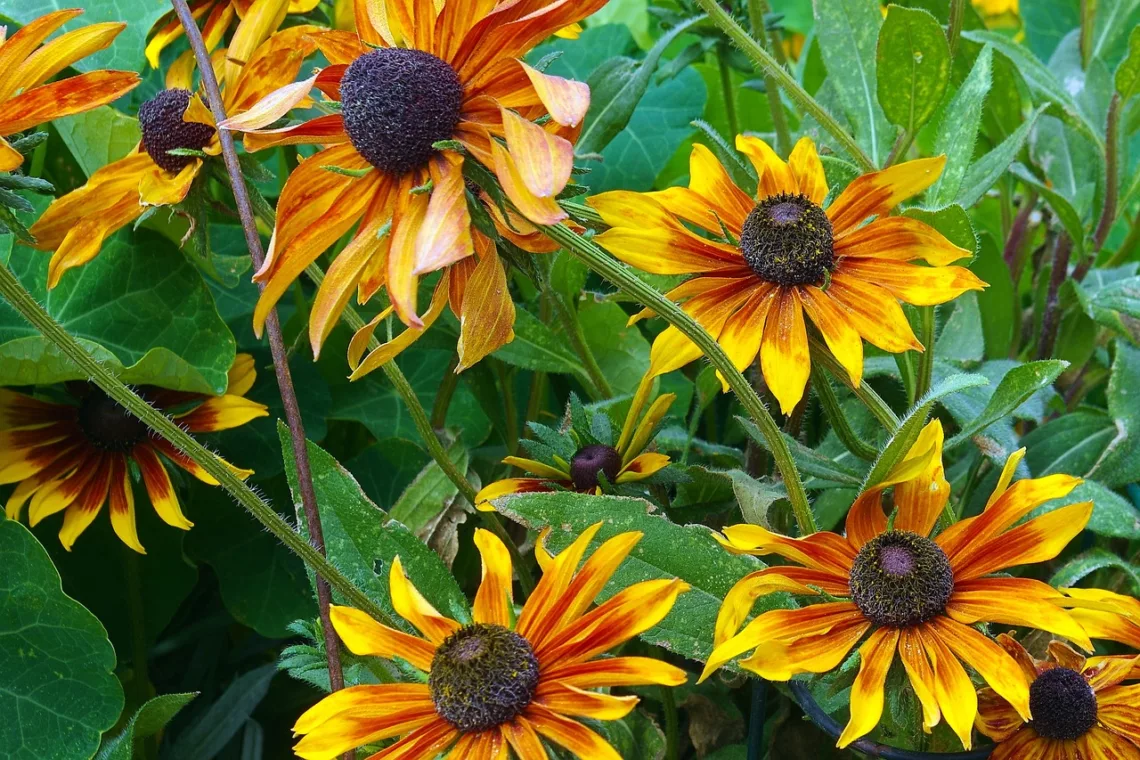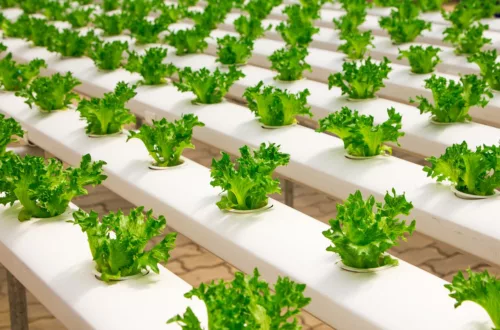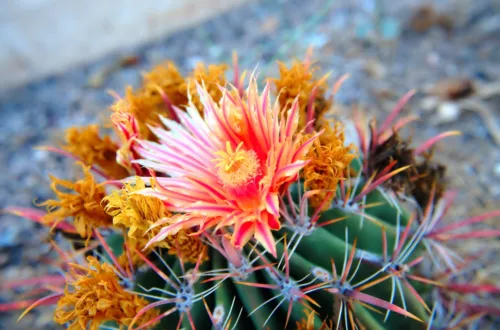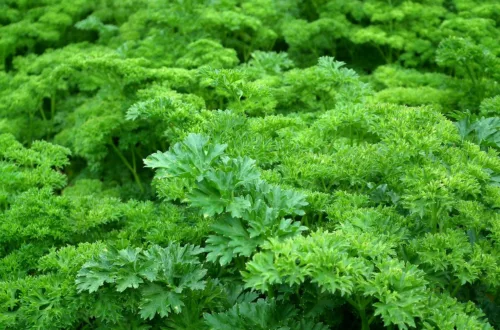When it comes to planting herbs in Colorado, timing is everything. As herb enthusiasts ourselves, we know the importance of planting at the right time to ensure a successful harvest. In this article, we’ll share our knowledge and experience with you to help you determine the best time to plant herbs in Colorado.
Colorado’s climate is unique and varies greatly depending on the region. In general, Colorado has a semi-arid to arid climate with low humidity, intense sunlight, and large temperature fluctuations. These conditions can make it challenging to grow herbs, but with the right timing and care, it’s definitely possible. We’ll discuss the different regions in Colorado and the optimal planting times for various herbs. So whether you’re a seasoned gardener or a beginner, we’ve got you covered. Let’s get started!
Understanding Colorado’s Climate
If you’re planning on planting herbs in Colorado, it’s important to understand the state’s climate. Colorado’s climate is known for its dramatic temperature swings, unpredictable weather patterns, and high altitude. In this section, we’ll cover the key aspects of Colorado’s climate that you need to know when planting herbs.
Hardiness Zone
Colorado is divided into four hardiness zones, which are based on the average annual minimum temperature. The hardiness zones range from 3a to 7a, with the colder zones in the higher elevations and the warmer zones in the lower elevations. Knowing your hardiness zone is important when selecting herbs that will thrive in your area.
Last Frost Date
The last frost date is the date after which it’s generally safe to plant tender herbs outdoors. In Colorado, the last frost date varies depending on your location and elevation. In general, the last frost date in Colorado ranges from mid-May to early June. However, in some higher elevation areas, the last frost date can be as late as early July.
First Frost Date
The first frost date is the date after which it’s generally safe to assume that the growing season is over. In Colorado, the first frost date varies depending on your location and elevation. In general, the first frost date in Colorado ranges from mid-September to mid-October. However, in some higher elevation areas, the first frost date can be as early as late August.
In Colorado, we experience mild winters in some areas, but in others, the winters can be harsh. It’s important to take into account the microclimate of your specific location when planning your herb garden. Additionally, early spring can be a difficult time for planting herbs as the weather is unpredictable and can still be quite cold.
Overall, understanding Colorado’s climate is crucial when planting herbs. By taking into account your hardiness zone, last frost date, and first frost date, you can ensure that your herbs have the best chance of thriving in Colorado’s unique climate.
Selecting the Right Herbs
When it comes to planting herbs in Colorado, selecting the right herbs is crucial to ensure a successful harvest. There are many different types of herbs to choose from, including perennial herbs, annual herbs, culinary herbs, medicinal and ornamental herbs. In this section, we will discuss the different types of herbs and which ones are best suited for Colorado’s climate.
Perennial Herbs
Perennial herbs are herbs that come back year after year. They are a great choice for Colorado because they are hardy and can withstand the harsh winters. Some of the best perennial herbs to plant in Colorado include:
- Sage
- Thyme
- Oregano
- Mint
- Chives
Annual Herbs
Annual herbs are herbs that need to be replanted every year. They are a great choice for Colorado because they grow quickly and produce a lot of herbs. Some of the best annual herbs to plant in Colorado include:
- Basil
- Cilantro
- Dill
- Parsley
- Chamomile
Culinary Herbs
Culinary herbs are herbs that are used in cooking. They are a great choice for Colorado because they are easy to grow and can be used in a variety of dishes. Some of the best culinary herbs to plant in Colorado include:
- Rosemary
- Basil
- Thyme
- Sage
- Chives
Medicinal and Ornamental Herbs
Medicinal and ornamental herbs are herbs that are used for their medicinal properties or for their beauty. They are a great choice for Colorado because they are hardy and can withstand the harsh climate. Some of the best medicinal and ornamental herbs to plant in Colorado include:
- Lavender
- Echinacea
- Chamomile
- Calendula
- Lemon balm
When selecting the right herbs for your garden, it’s important to consider the climate and growing conditions in Colorado. Choose herbs that are easy to grow and maintain, and that will thrive in your specific location. With the right herbs, you can create a beautiful and bountiful herb garden that will provide you with fresh herbs all year round.
Preparing the Garden~ When to Plant Herbs in Colorado
When it comes to planting herbs in Colorado, it’s essential to prepare your garden correctly. We want to ensure that our herbs have the best possible environment to grow and thrive. In this section, we’ll discuss the three main aspects of garden preparation: soil preparation, choosing a location, and container gardening.
Soil Preparation
The first step in preparing your garden is to make sure you have the right soil. Herbs grow best in moist, well-drained soil with good drainage. If you have clay soil, you may need to amend it with sand or compost to improve drainage. If you have sandy soil, you may need to add organic matter to improve water retention. We recommend testing your soil to determine its pH level. Most herbs prefer a pH level between 6.0 and 7.0.
Choosing a Location
The second step in preparing your garden is to choose the right location. Herbs need full sun to grow, so it’s essential to find a spot that gets at least six hours of direct sunlight per day. If you don’t have a spot with full sun, you can plant herbs that tolerate partial shade, such as cilantro, parsley, and chives. If you’re short on space, consider container gardening. You can grow herbs in pots on your patio or balcony.
Container Gardening
Container gardening is an excellent option for those with limited space or poor soil. When choosing a container, make sure it has drainage holes to prevent water from accumulating at the bottom. Use a high-quality potting mix that’s well-draining and nutrient-rich. Make sure to water your container plants regularly, as they can dry out quickly. You can also add organic fertilizer to your container plants to help them grow.
In summary, preparing your garden for herb planting involves ensuring you have the right soil, choosing a location with full sun or partial shade, and considering container gardening if you have limited space or poor soil. By following these steps, you’ll be on your way to growing healthy and flavorful herbs in Colorado.
Planting Schedule~ When to Plant Herbs in Colorado
When planning to grow herbs in Colorado, it is important to consider the planting schedule. The timing of planting can greatly affect the growth and yield of your herbs.
Early Season Planting
For early season planting, it is best to wait until late spring when the soil temperatures have warmed up to at least 50°F. Some herbs that can be planted early in the season include chives, parsley, and cilantro. These herbs are considered cool-season crops and can tolerate cooler temperatures.
Midseason Planting
Midseason planting typically takes place in late summer or early autumn. Herbs such as basil, rosemary, and thyme are considered warm-season crops and require warmer soil temperatures to grow. These herbs have longer maturity periods and require a longer growing season to reach maturity.
Late Season Planting~ When to Plant Herbs in Colorado
Fall planting is also an option for some herbs. Herbs such as sage and oregano can be planted in late summer or early fall. These herbs are considered cool-season crops and can tolerate cooler temperatures.
It is important to note that soil temperatures play a crucial role in the growth and development of herbs. Herbs require warm soil temperatures to germinate and grow. When planting, make sure to check the soil temperature to ensure that it is warm enough for your herbs to grow.
In summary, the planting schedule for herbs in Colorado is dependent on the type of herb and the soil temperatures. Cool-season crops can be planted early in the season, while warm-season crops require warmer soil temperatures and longer maturity periods. Fall planting is also an option for some herbs. By following the proper planting schedule, we can ensure a successful herb garden.
Caring for Your Herbs~ When to Plant Herbs in Colorado
Growing herbs in Colorado can be a great way to add fresh flavors to your meals and a good choice for those with a green thumb. Herb gardening is a great addition to any garden, and it is easy to care for small plants.
Watering~ When to Plant Herbs in Colorado
Watering your herbs is essential, especially in Colorado’s dry climate. It is important to keep the soil moist but not waterlogged. We recommend using rain barrels to collect water for your herbs. This not only saves water but also provides beneficial nutrients for your plants.
Mulching~ When to Plant Herbs in Colorado
Mulching is a great way to keep the soil moist and prevent weeds from growing. We recommend using organic mulch, such as leaves or grass clippings, to protect your herbs from the cold winter months. Mulching also helps to regulate the soil temperature and can prevent soil erosion.
Pruning~ When to Plant Herbs in Colorado
Pruning your herbs is essential to keep them healthy and promote new growth. We recommend pruning your herbs regularly to prevent them from becoming too woody. This also helps to keep your herbs bushy and full, which is beneficial for attracting beneficial insects to your garden.
Overall, caring for your herbs in Colorado is easy and rewarding. With a little bit of care and attention, you can enjoy fresh herbs all year round.
Harvesting and Using Herbs~ When to Plant Herbs in Colorado
When it comes to harvesting herbs, the best way is to pick fresh leaves, just before they flower. This ensures maximum flavor and aroma. Some herbs, such as basil, can be harvested multiple times throughout the growing season. Simply cut back the top third of the plant, leaving at least two sets of leaves on the stem.
Harvesting Techniques~ When to Plant Herbs in Colorado
Different herbs require different harvesting techniques. For example, some herbs, such as thyme and rosemary, have woody stems that can be difficult to remove from the leaves. In this case, it’s best to strip the leaves from the stem by running your fingers down the stem in the opposite direction of growth. Other herbs, such as mint and cilantro, have more delicate stems and can be harvested by snipping the leaves with scissors or shears.
Preserving Herbs~ When to Plant Herbs in Colorado
To preserve herbs for later use, there are several methods to choose from. A popular method is to dry the herbs by hanging them upside down in a warm, dry place. Once the herbs are dry, they can be stored in an airtight container and used for months to come. Another method is to freeze the herbs in ice cube trays with a little bit of water or olive oil. This is a great way to have fresh herbs on hand all year round.
Culinary and Other Uses~ When to Plant Herbs in Colorado
Herbs can be used in a variety of ways in the kitchen. Fresh basil is a great addition to salads and pasta dishes, while thyme and rosemary are perfect for seasoning meats and vegetables. Aromatic leaves, such as mint and cilantro, can be used to make herbal tea or added to fruit salads for a refreshing twist. Flower heads, such as those from chamomile and lavender, can be used to make a relaxing herbal tea or added to bathwater for a soothing soak. Herbs can also be dried and added to your spice rack for a flavorful addition to any dish.
In conclusion, harvesting and using herbs is a simple and rewarding process. By following these tips and techniques, we can enjoy the fresh flavors and aromas of herbs throughout the growing season and beyond.
Buying and Starting Herbs~ When to Plant Herbs in Colorado
If you’re looking to start an herb garden in Colorado, you have a few options for getting started. In this section, we’ll cover the different ways you can start your herb garden, from seed to seedling, purchasing herb starter plants, and creating an indoor herb garden.
From Seed to Seedling~ When to Plant Herbs in Colorado
Starting herbs from seed can be a fun and rewarding experience. It’s also a great way to save money, as seed packets are often cheaper than purchasing herb starter plants. Some of the easiest herbs to grow from seed include basil, greek oregano, and mint plants.
When planting seeds, it’s important to plant them at the right time. In Colorado, the best time to plant herbs is in the spring, after the last frost. This will give your plants a head start and help them get established before the hot summer months.
Purchasing Herb Starter Plants~ When to Plant Herbs in Colorado
If you don’t want to start your herbs from seed, you can purchase herb starter plants from your local nursery or garden center. Tagawa Gardens is a great place to start, as they have a wide selection of herbs and great companion plants to choose from.
When purchasing herb starter plants, look for plants that are healthy and have a good root system. Make sure the plants have drainage holes in their containers and are labeled with the correct name of the herb.
Creating an Indoor Herb Garden~ When to Plant Herbs in Colorado
If you don’t have a lot of outdoor space or want to have fresh herbs year-round, creating an indoor herb garden is a good option. Some of the easiest herbs to grow indoors include basil, greek oregano, and mint plants.
When creating an indoor herb garden, make sure your plants get at least 6 hours of direct sun each day. If you don’t have a lot of natural light, you can use artificial lights to supplement your plant’s energy.
Overall, there are many ways to start your herb garden in Colorado. Whether you choose to plant seeds, purchase herb starter plants, or create an indoor herb garden, you’ll reap a lot of benefits from having fresh herbs on hand. Plus, you’ll be helping out the native bees in your area with beautiful plants like o. x majoricum and lemon balm.







